Originally published in The Midden, 20(1).
February 1988.
By Grant Keddie
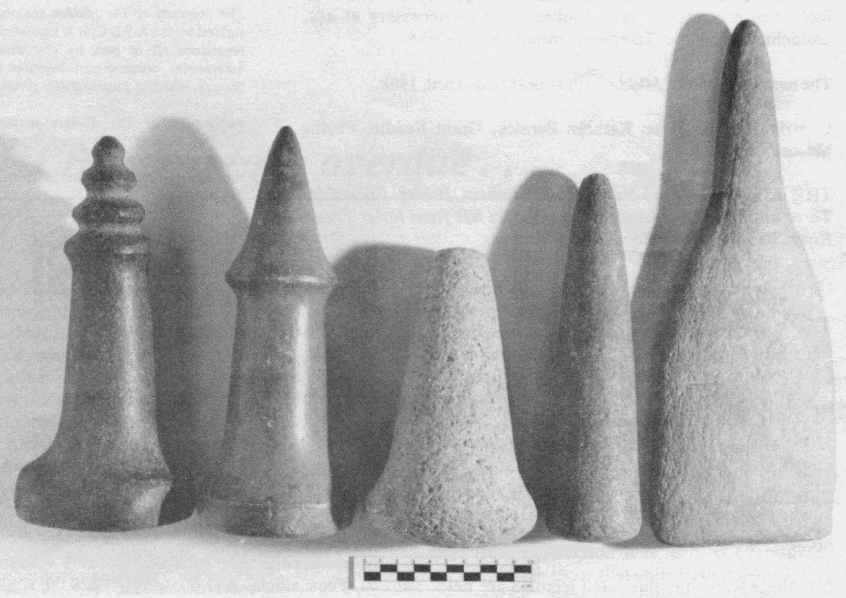
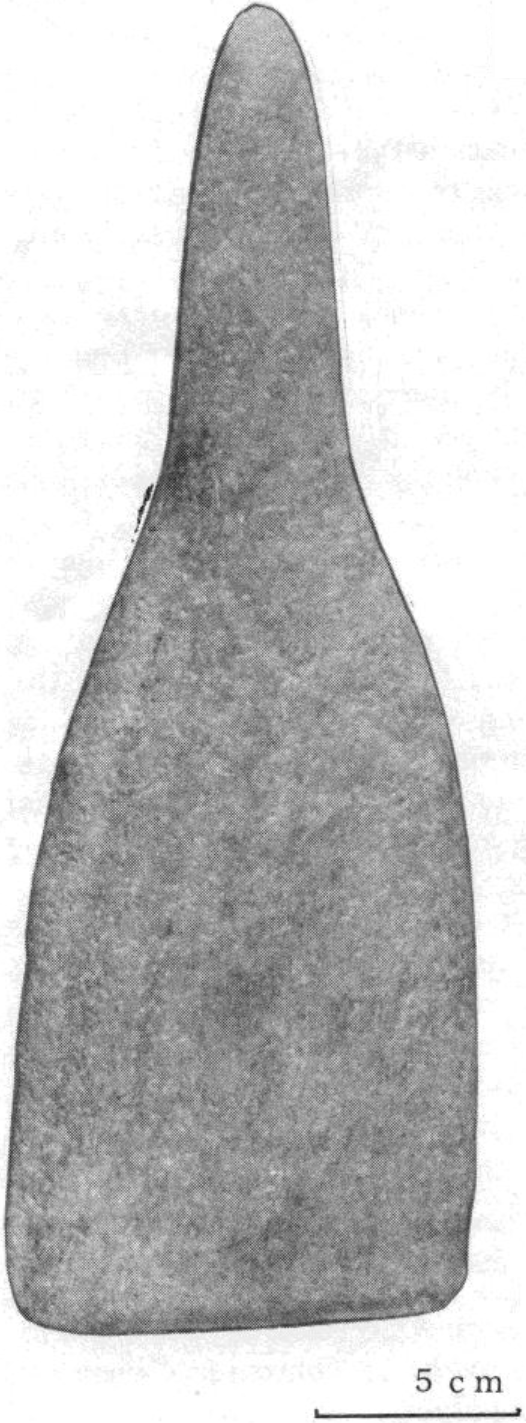
Flat, paddle-shaped, stone hand-mauls are found in some large prehistoric village sites in the southeastern interior of British Columbia. Many people have been curious as to what they were used for and how old they are. The specimen shown in Figure 1 seems to me to represent the native artisan’s “mental template” or perfect idea of what a hand-maul of this type should look like.
The specimen is one of several hundred handmauls collected by Keith and Ellen Edgell from intermittently flooded sites along the Arrow Lakes. This particular specimen does not appear to have been used. Many similar artifacts are worn down almost to their handles; the bottoms are often curved, implying a pounding and rolling motion when using the tool. They are often made from natural stone slabs or flat, waterworn cobbles and vary considerably in amount of intentional shaping.
Other hand-mauls—those with flat and round flanged (expanding) bases, and long, gradually tapering specimens without distinctly formed bases or tops—are found at the same sites as the paddle-shaped mauls. In fact, if you line up all the hand-mauls in the Edgell collection, there is almost an evolutionary continuum. Some short, paddle-shaped specimens are almost round, whereas some long, tapering mauls are flat.
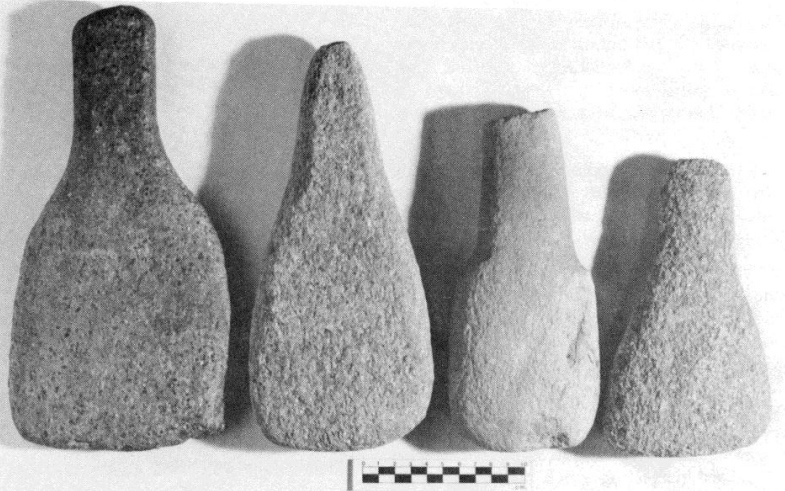
The nature of the raw material seems to play an important role in the ultimate shape. The flatter specimens are often made of metamorphic schist or gneiss. The more rounded hand-mauls are made of harder, igneous rocks such as diorite, granite, and andesite.
There seems to be a correlation between the distribution of paddle-shaped hand-mauls and the availability of suitable metomorphic raw material in the interior plateau of British Columbia. Paddle-shaped mauls also occur in the upper Columbia River area and in the middle Columbia near the boundary of the Interior Plateau and Northwest Coast culture areas. Some of the stone material used on the American Plateau may have originated in southeastern British Columbia.
Function
Whether the several types of hand-mauls had different uses, is uncertain. A.E. Pickford (an assistant in Anthropology at the B.C. Provincial Museum from 1944 to 1948) states that among the Kootenay “the most common tools were unshaped stone hand-hammers, roughly shaped stone clubs for pounding in teepee pegs, and paddle-shaped stone implements for beating the hairlike tree moss.” Pickford describes how “the hairlike tree moss was gathered in large quantities and was eaten after being left in the ground under a hot fire for some days. Another method was to dampen the moss, pound it into flat cakes, and bake it.”
Pickford spent his younger years in the Nelson area collecting artifacts. The only record of where Pickford obtained his information is in a letter written in 1947, in which he refers to the ” spade-like-stones” he had collected in the Kootenay Lake area: “I spoke of them to a very old Indian whose English was not too good; from him I gathered their principal use was in the preparation of the well-authenticated moss bread prepared from the tree lichen Alectoria Jupata.”
This lichen is now known as Bryoria fremontii. Nancy Turner gives an excellent overview of the native use and distribution of the species in her article “Economic Importance of Black Tree Lichen /Bryoria fremontii) to the Indians of Western North Amierca” [Economic Botany 1977, Vol.31:461-470).
Although lichen pounding may have been one of the functions of the paddle-shaped handmauls, the evidence of use-wear suggests some additional pounding functions.
A slightly concave base would indicate probable use for pounding wedges or wooden stakes; a convex base would suggest a poundinggrinding activity. The use-wear on most of the paddle-shaped and the tapering, slightly- flanged-base specimens indicates extensive grinding, and, therefore, probable use for food processing. Some, however, have concave centres on the bottom and pecking on the sides of the base suggesting quick pounding rather than a pounding-grinding action. The large, heavy, tapering mauls with flat bases could have been used for either food crushing or heavy construction pounding.
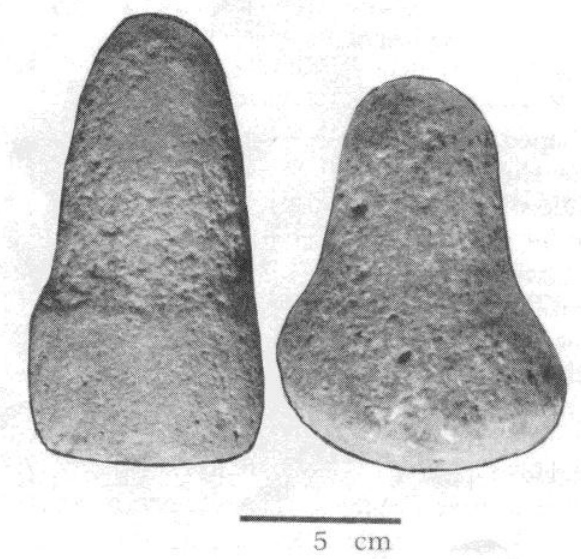
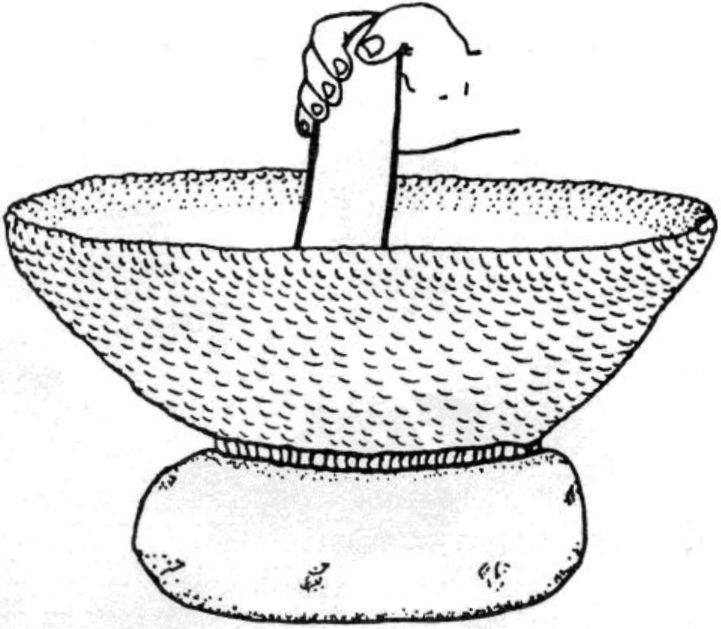
In the Interior, hand-mauls are known to have been used to macerate berries and seeds. A more common use was for pulverizing dried meat, which was mixed with berries and oil. As late as 1901 a woman was observed on the Columbia River grinding dried salmon in a wooden bowl using a large, tapering hand-maul with an animal-style top.
On the American Plateau hand-mauls were used with a basketry hopper on a stone mortar to crush acorns. In the Edgell collection there are some large, round stones with shallow concavities, which resemble mortars.
Dating, Distribution, and Evolution
In the middle Columbia River area, the paddleshaped hand-maul is a diagnostic trait for the time period 1500 B.C. – A.D. 500. In the Arrow and Kootenay Lakes region, both paddle-shaped mauls and tapering mauls with straight to slightly flanged bases are found with collections characteristic of this same time period. Near the end of the period, some of the basal flanges were wide and well made. In the mid-Fraser and Thompson river regions, animal-head style mauls appeared by 400 B.C. (possibly as early as 1000 B.C.).
The finely shaped conical, nipple-topped, and grooved (ring-topped, hand-mauls seem to have first occurred on the southern coast of British Columbia about 300 B.C., continuing until about A.D. 400. There are no earlier developmental prototypes on the Coast as there are in the Interior. The common, well-formed, coastal style mauls did not appear in the interior of British Columbia until after about A.D. 400. This suggests more rapid technological development on the Coast.
Along the middle Columbia River, handmauls with shaped heads in conical, grooved, or animal-head style occur after A.D. 500. Around the same time, or later, the southern coast styles are found in small numbers on the Queen Charlotte Islands and in southern Alaska on the Alexander archipelago. After A.D. 500 we see the local expansion of hand-mauls in coastal Oregon and California. The latter case is an adoption of more elaborately shaped tops of long, tapering mauls that first appeared in central California about 1000 B.C.
The evidence found in southeastern British Columbia and farther down the Columbia River, shows hand-mauls evolving from simple hammerstones. The first hand-mauls were natural, oblong cobbles that were sometimes shaped to give them more even tapering or narrower tops, to serve as handles. Some round, water-smoothed specimens were apparently pecked along the sides to provide a better grip. Gradually, more formal shaping of shafts, bases and tops was undertaken. Animal-head style tops developed first, followed by conical, grooved, and nipple-topped styles. Flat-topped mauls developed on the coast after A.D. 500 and later spread to parts of the Interior.
Conclusions
The evidence suggests initial use of formed hand-mauls mainly for food processing in the Interior Plateau, and a later emphasis toward refined, spool-shaped hand-mauls, used primarily for woodworking, on the Coast and adjacent areas of the Interior.
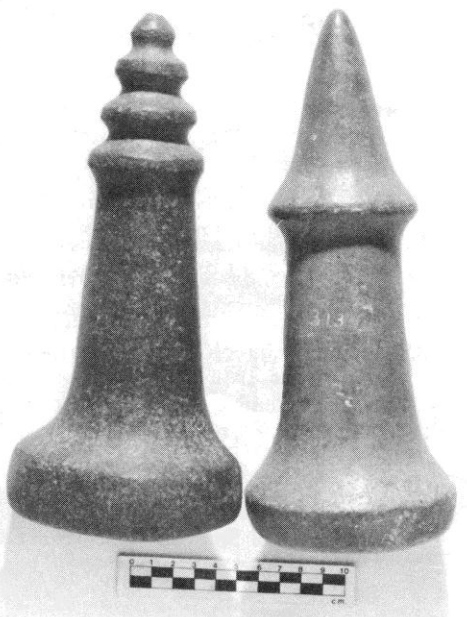
Most paddle-shaped mauls date to an early time period and may not have been the type of maul documented historically as being used by the Kootenay to pound lichen. I suspect that Pickford showed a specimen to a native elder who made an educated guess as to its use. However, lichen pounding along with other food processing activities is one of the most likely uses of the paddle-shaped maul, as well as of several other related styles of hand-mauls from southeastern British Columba.
Much more work needs to be done before we can precisely date and understand the technological development and uses of these interesting artifacts.